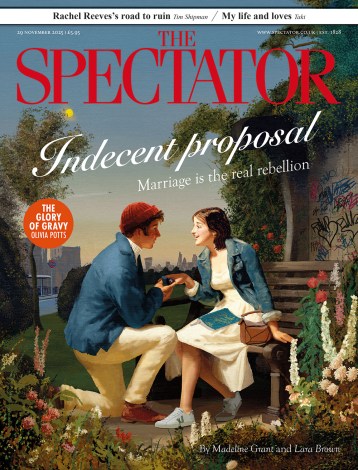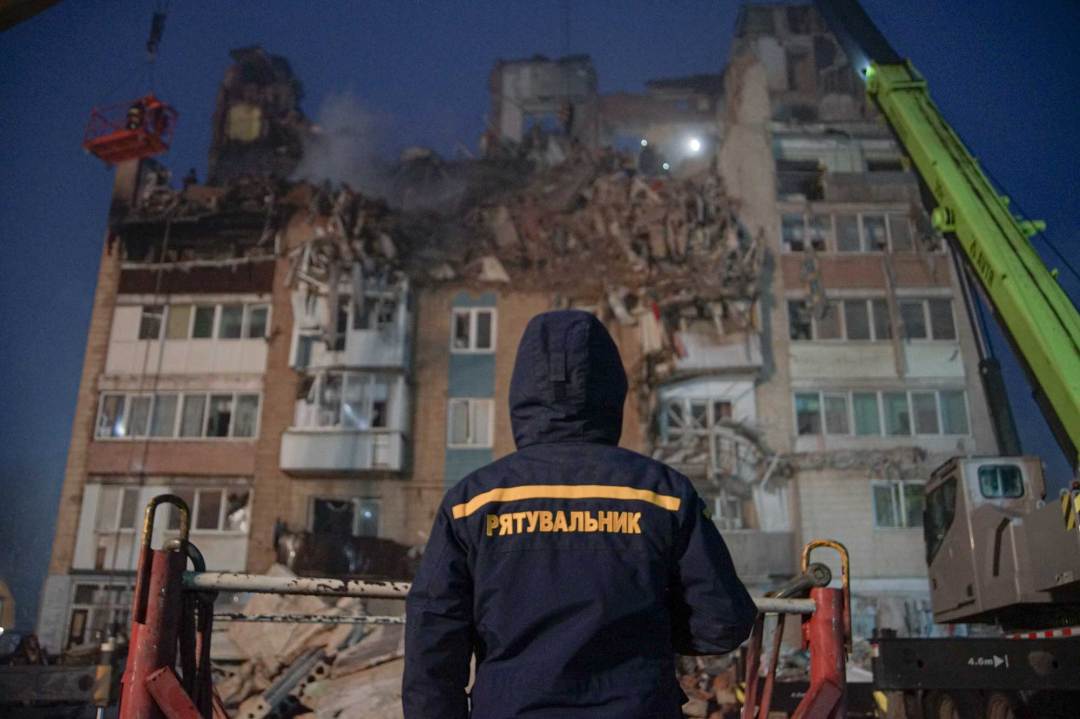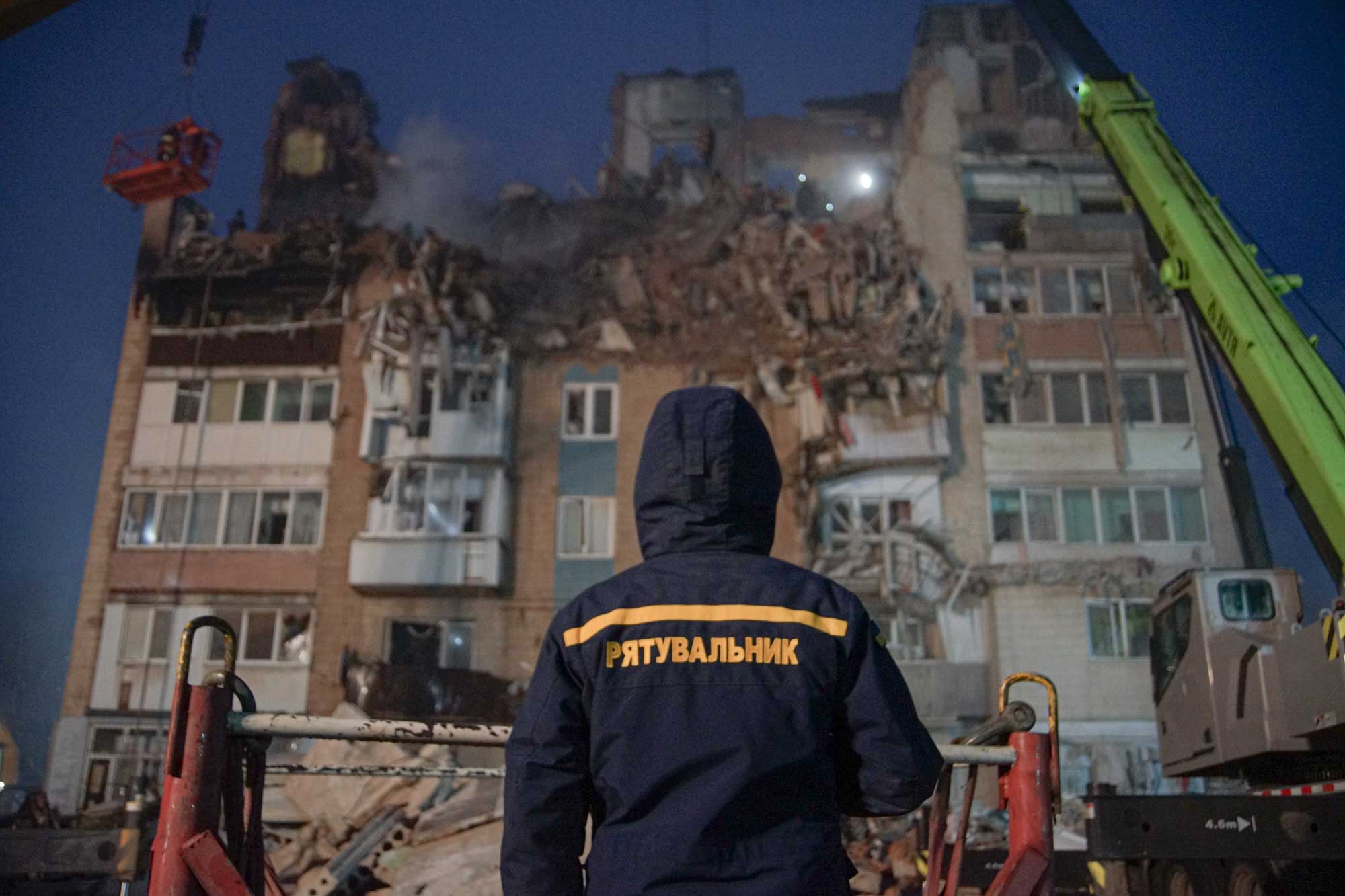
In order to impose peace terms, you first need to win the war. That fundamental principle seems, for the moment, to elude Ukraine’s European allies. Donald Trump, on the other hand, has taken the more pragmatic – some would say more cynical – view that Ukraine will never defeat Russia and therefore needs to make the best of a bad lot. Trump’s strategy for peace in Ukraine has been to browbeat Volodymyr Zelensky into approving a deal acceptable to Vladimir Putin. In fairness, Trump has also gone some way to putting the squeeze on the Kremlin too, by sanctioning the oil giants Rosneft and Lukoil, authorising the Ukrainians to use US–provided long-range weapons against Russian targets, and threatening to provide Kyiv with Tomahawk cruise missiles.
Many Ukrainians fear that their army and economy will crumble faster than Russia’s
The latest fruit of the White House’s strategy has been a 28-point peace plan – dubbed the 28PPP – drafted during secret meetings between Putin’s Harvard–educated former Goldman Sachs banker envoy Kirill Dmitriev and Trump’s golfing buddy, real-estate lawyer Steve Witkoff. Leaked to the US press last week, the 28PPP reads like a shopping list of Kremlin demands. The 28PPP was quickly eviscerated by Kyiv, backed by Ukraine’s allies in Europe, who threw out clauses that required Ukraine to give up the remaining territory of Donetsk region still unoccupied by Russia, cap the size of its military, and promise never to join Nato. With the plan now filleted down to 19 points during talks with US representatives in Geneva this week, Zelensky says he is ready to meet Trump to thrash out key remaining details. ‘Our delegations reached a common understanding on the core terms of the agreement discussed,’ Rustem Umerov, the secretary of Ukraine’s security council, announced. ‘We look forward to… completing final steps and making a deal with President Trump.’
Sounds good – except for one crucial detail. It’s not Trump who has to sign off on a deal, but Putin. And Putin himself has given no sign that he agrees with the original 28PPP, let alone its later trimmed-down versions. The ‘final steps’ of which the Ukrainians speak are rather the opposite: the first steps in a negotiating process that is likely to be long, painful and humiliating.
There is a fundamental misconception at the heart of the negotiations: that Putin is ready to make peace at all. Neither Dmitriev nor Witkoff have any formal diplomatic status – which on balance is a good thing because some talks on a semi-informal basis are considerably better than no talks at all. But so far Dmitriev’s role has been twofold: one, to dangle the prospect of lucrative oil, minerals and metals deals in front of Trump as a potential peace dividend; and the other, to test how many concessions the White House can squeeze out of Zelensky. As for the White House’s 28PPP, the most positive thing that the Kremlin spokesman Dmitry Peskov has officially said is the plan ‘could be a very good basis for negotiations… We will give it careful consideration.’
At this moment of the conflict, Putin is, at best, no more than peace-curious. The simple reason is that he believes he is winning. On the ground in Donbas, his troops have seized the strategic heights of Pokrovsk and are advancing fast in the more vulnerable southern sectors of Zaporozhzhia. Politically, Zelensky has been severely weakened by an ugly corruption scandal that implicates some of his closest associates in war profiteering. Russian strikes against Ukrainian energy infrastructure are poised to plunge whole regions into cold and darkness this winter. Ukraine’s desertion rates are four times what they were a year ago. Even prominent war heroes such as the Ukrainian serviceman blogger ‘Bakhmut Daemon’ wrote this week that ‘people long for the end of war’. Why should Russia take its boot off Ukraine’s throat, reasons the Kremlin, while the war is going its way?
How to respond to this looming military crisis has divided Ukraine’s allies and Ukrainians themselves. In contrast to Trump’s cold realism – or defeatism – Europe continues to believe that more money, more weapons and more pressure on Russia will help Ukraine eventually win back its lost territories, force Moscow to pay reparations and bring war criminals to justice. ‘We, as Europeans, have always supported a long, lasting and just peace,’ the EU foreign affairs chief Kaja Kallas put it this week. ‘For any plan to work, it needs Ukrainians and Europeans on board.’ The hope is that economic pressure, plus Ukrainian drone and missile strikes deep inside Russia, will eventually force Putin to the negotiating table.
Many Ukrainians, however, including former supporters of Zelensky, fear that Ukraine’s army and economy will crumble faster than Russia’s. ‘Every subsequent deal for Ukraine will only be worse… we are losing people, territory, and the economy,’ Iuliia Mendel, Zelensky’s press secretary, -2019-21, wrote recently. ‘Many who reflexively oppose every peace proposal believe they are defending Ukraine. With all respect, that is the clearest proof they have no idea what is actually happening on the front lines and inside the country right now.’ The EU, Mendel asserts, has paid Russia more than €311 billion for energy since the beginning of the war vs €165 billion given to Kyiv in aid.

The good news is that for all its flaws, a real peace process has begun. More, the peace plan now on the table contains the framework of what is likely to be the final deal, namely a partition of Ukraine along the line of control, Ukrainian neutrality and security guarantees short of Nato membership. Hopefully, the Kremlin demand for Zelensky to hand over the unconquered portion of Donbas can be negotiated away, not least because such a capitulation would make Ukraine instantly ungovernable. Rights for Russian speakers in Ukraine are actually a policy Zelensky once supported. Caps on Ukraine’s military and its future alliances are matters of fundamental symbolic importance to its future as an independent state, but can perhaps be couched in acceptable diplomatic terms. A demilitarised zone may be possible. Nato members’ boots on the ground is certainly not.
One thing is clear: the process will be long, repetitive, frustrating and governed by Putin’s stubbornness. Trump’s enthusiasm for an imminent deal may be naive, but it’s nonetheless encouraging. But this will not all be over by Christmas.









Comments